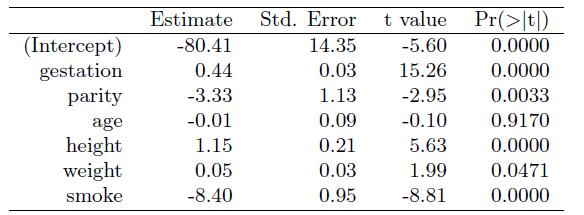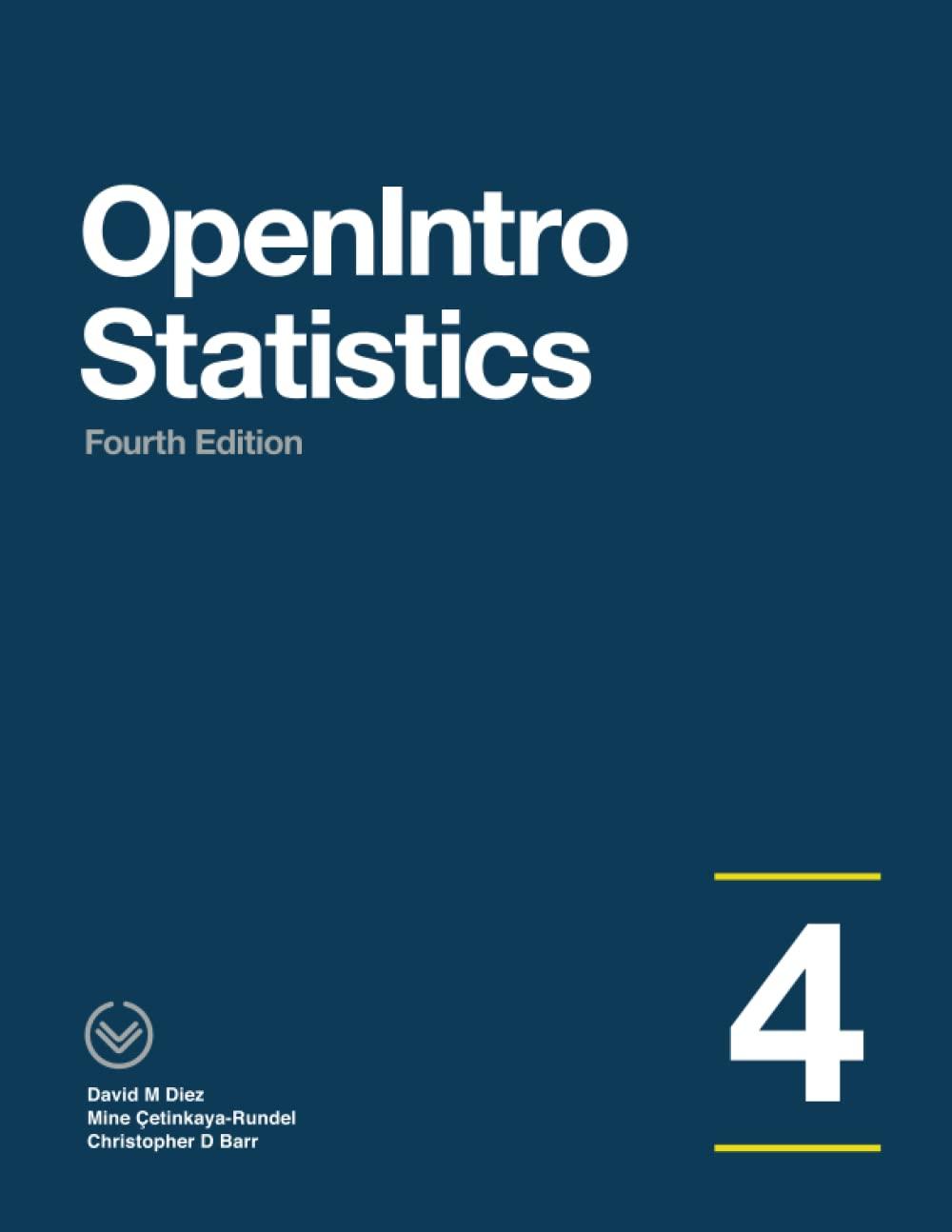We considered the variables smoke and parity, one at a time, in modeling birth weights of babies
Question:
We considered the variables smoke and parity, one at a time, in modeling birth weights of babies in Exercises 9.1 and 9.2. A more realistic approach to modeling infant weights is to consider all possibly related variables at once. Other variables of interest include length of pregnancy in days (gestation), mother's age in years (age), mother's height in inches (height), and mother's pregnancy weight in pounds (weight). Below are three observations from this data set.

The summary table below shows the results of a regression model for predicting the average birth weight of babies based on all of the variables included in the data set.
(a) Write the equation of the regression model that includes all of the variables.
(b) Interpret the slopes of gestation and age in this context.
(c) The coefficient for parity is different than in the linear model shown in Exercise 9.2. Why might there be a difference?
(d) Calculate the residual for the first observation in the data set.
(e) The variance of the residuals is 249.28, and the variance of the birth weights of all babies in the data set is 332.57. Calculate the R2 and the adjusted R2. Note that there are 1,236 observations in the data set.
Data from Exercise 9.2
Exercise 9.1 introduces a data set on birth weight of babies. Another variable we consider is parity, which is 1 if the child is the first born, and 0 otherwise. The summary table below shows the results of a linear regression model for predicting the average birth weight of babies, measured in ounces, from parity.
Data from Exercise 9.1
The Child Health and Development Studies investigate a range of topics. One study considered all pregnancies between 1960 and 1967 among women in the Kaiser Foundation Health Plan in the San Francisco East Bay area. Here, we study the relationship between smoking and weight of the baby. The variable smoke is coded 1 if the mother is a smoker, and 0 if not. The summary table below shows the results of a linear regression model for predicting the average birth weight of babies, measured in ounces, based on the smoking status of the mother.
Step by Step Answer:

OpenIntro Statistics
ISBN: 9781943450077
4th Edition
Authors: David Diez, Mine Çetinkaya-Rundel, Christopher Barr





